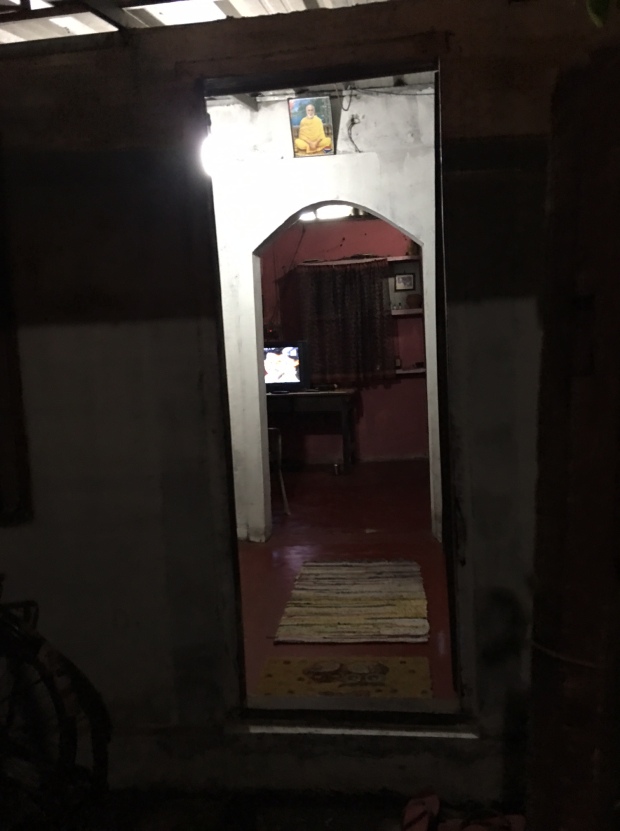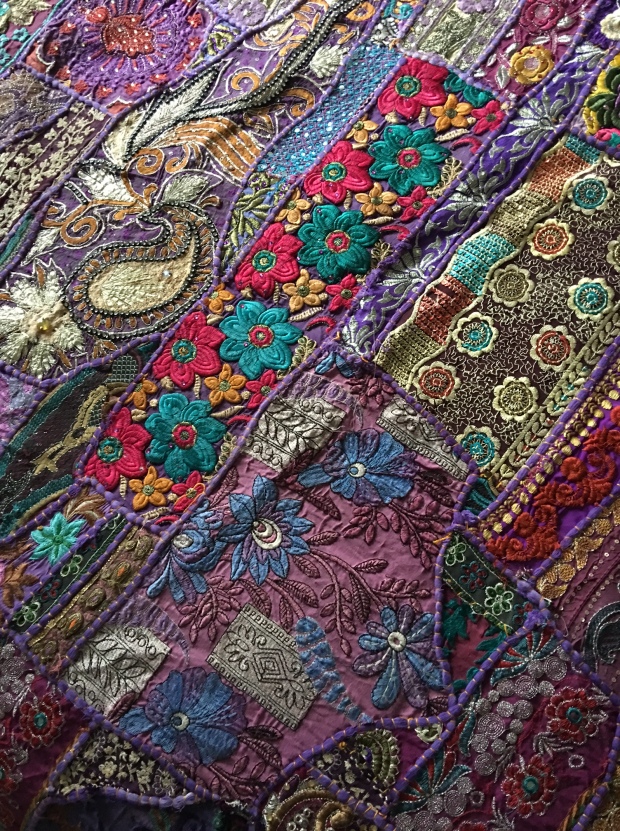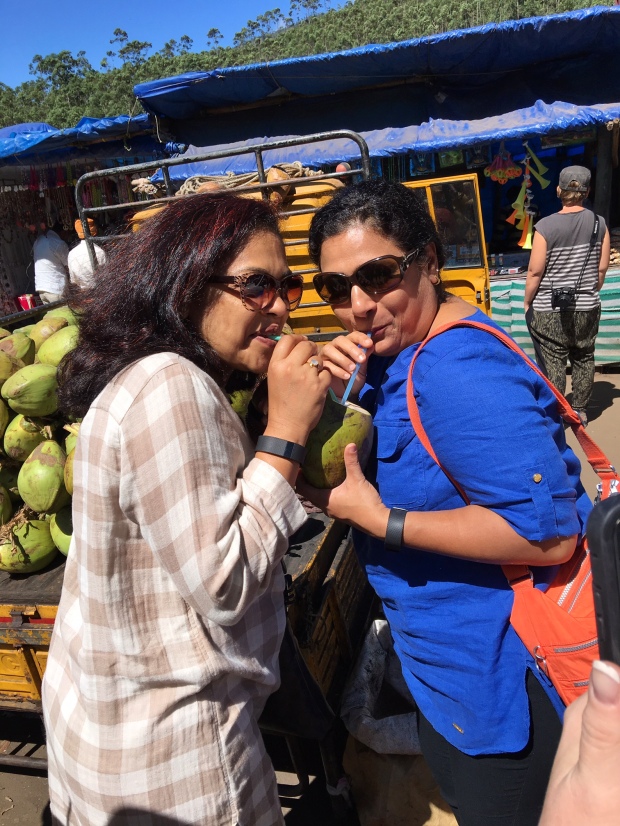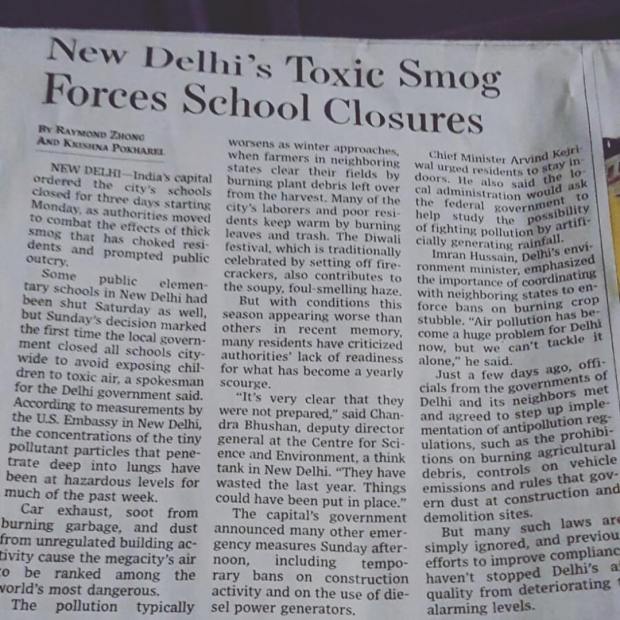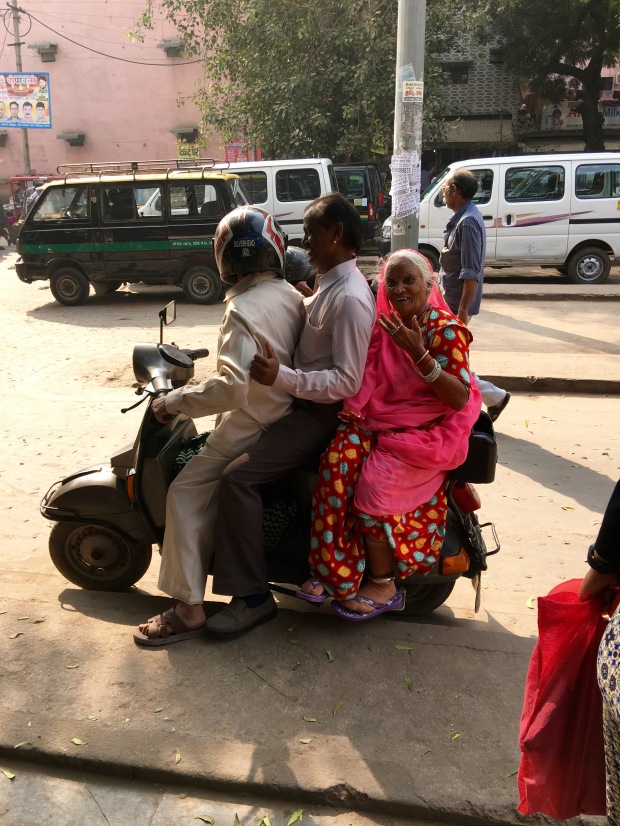
This photo is from the same evening as yesterday’s post, shot while I walked at night through a small village in Kerala. I was surprised that all the doors were open and you could see inside every home and shop. (So unlike America, where we close ourselves off.) Because I’ve sewn my whole life and love to quilt, this scene stopped me in my tracks. We pay lots of money in the US for antique, treadle sewing machines. This one was a beaut. I thought about my fancy Bernina machine at home that probably cost more than the annual income of several of the families in this village combined. Some things are universal though: the owner of this shop saved an impressive pile of scraps. (I would have enjoyed sorting through them because what quilter doesn’t love a pile of scraps?)
